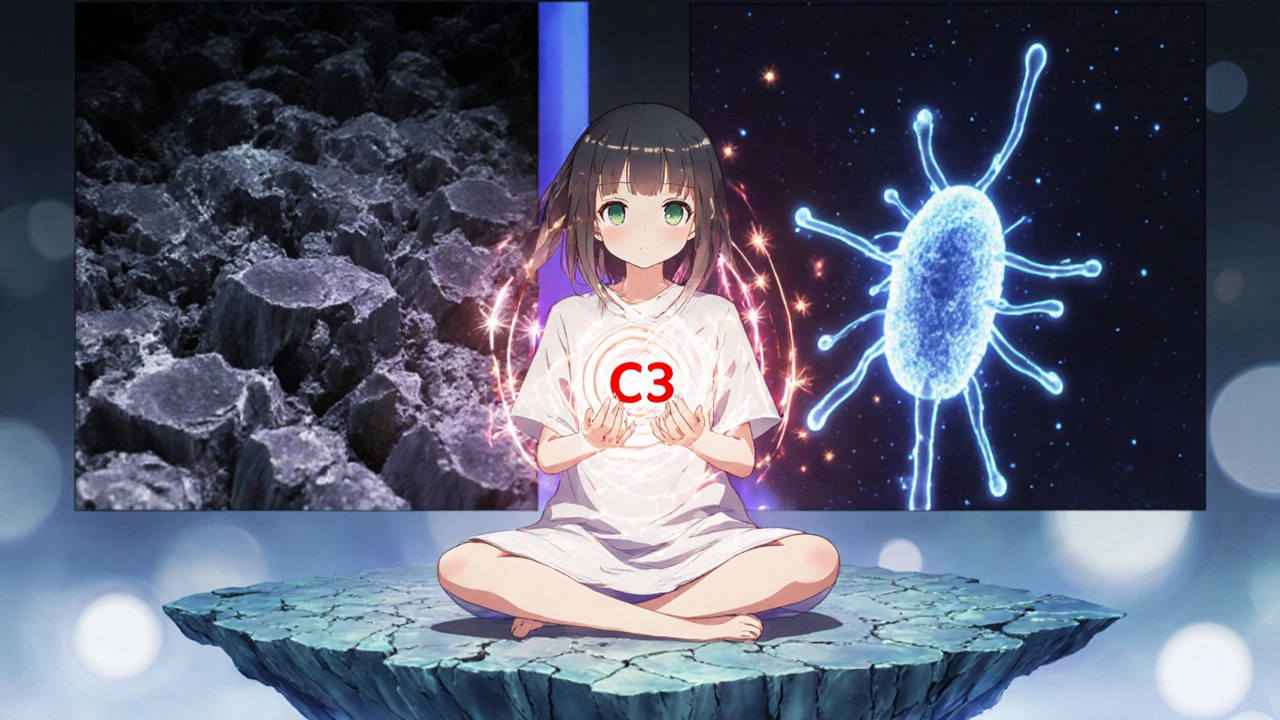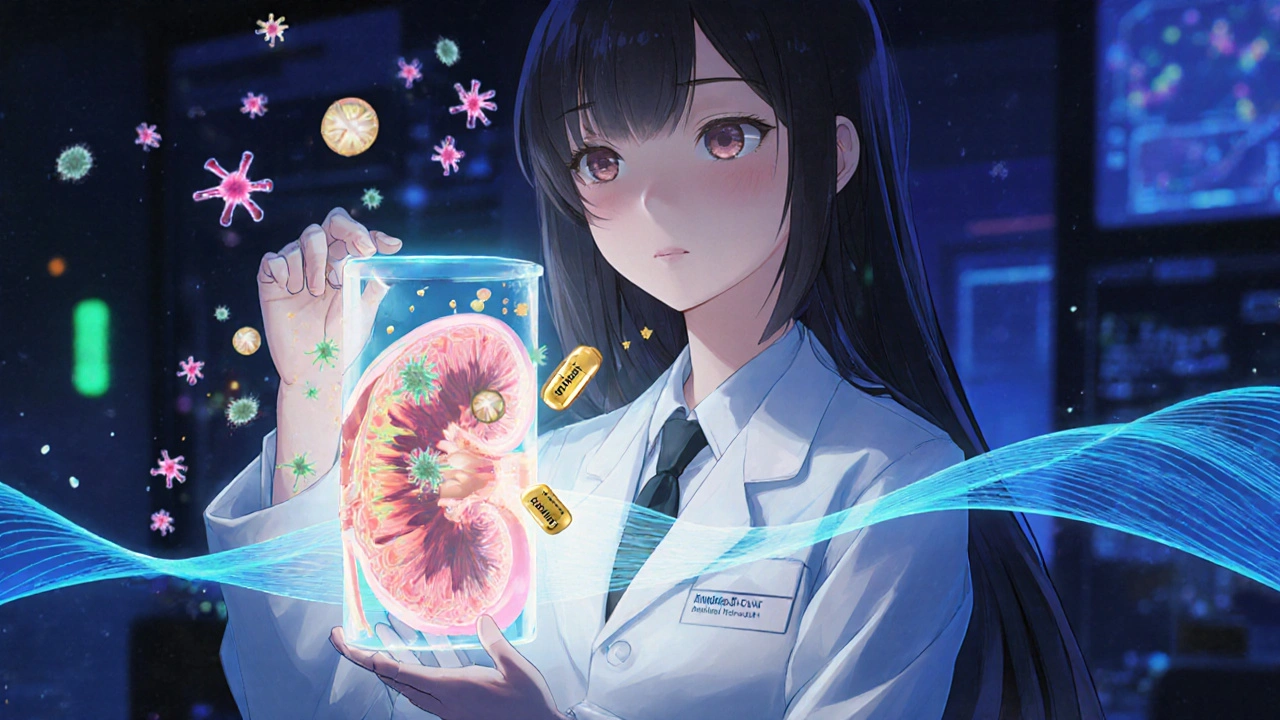Glomerulonephritis: How Your Immune System Attacks Kidney Filters
 Nov, 19 2025
Nov, 19 2025
Imagine your kidneys are like tiny coffee filters, cleaning your blood every minute of the day. Now imagine your immune system-designed to protect you-starts attacking those filters instead. That’s what happens in glomerulonephritis, a condition where your body’s own defenses turn against the glomeruli, the microscopic structures that filter waste and excess fluid from your blood.
What Exactly Are the Glomeruli?
The glomeruli are clusters of tiny blood vessels inside each nephron, the functional unit of the kidney. They’re made up of three layers: the endothelial cells lining the capillaries, the glomerular basement membrane (a thin, mesh-like barrier), and the podocytes-specialized cells with foot-like projections that wrap around the capillaries. Together, they act as a precision filter, letting water and small waste molecules pass while holding onto proteins and blood cells. When glomerulonephritis strikes, this filter gets damaged. Immune cells and proteins swarm the area, causing inflammation. The result? Blood and protein leak into your urine. You might not notice at first, but over time, your kidneys lose their ability to clean your blood properly. That’s when symptoms like swelling in your legs, high blood pressure, and dark or foamy urine start showing up.Two Main Ways the Immune System Goes Wrong
Not all glomerulonephritis is the same. There are two big categories based on how the immune system attacks. The first is immune complex-mediated damage. This happens when your body makes antibodies that bind to antigens (foreign substances), forming clumps called immune complexes. These clumps get stuck in the glomeruli, triggering inflammation. A classic example is post-streptococcal glomerulonephritis, which can follow a strep throat or skin infection. In kids, this often clears up on its own within weeks. But in adults, it can linger and cause lasting damage. The second type is complement-mediated, like C3 glomerulonephritis (C3G). Here, the problem isn’t antibodies-it’s the complement system, a group of proteins that normally help destroy bacteria. In C3G, something goes wrong with regulation. The complement system goes into overdrive, especially the C3 protein, which builds up in the glomeruli at levels three to five times higher than normal. This constant activation causes ongoing damage. About 60-70% of C3G cases involve autoantibodies called C3 nephritic factor, which keep the complement system turned on.The Most Common Forms You Need to Know
There are several specific types of glomerulonephritis, each with its own pattern. IgA nephropathy is the most common primary form worldwide. It happens when IgA antibodies-normally found in mucous membranes-build up in the glomeruli. In North America, it affects about 2.5 people per 100,000 each year. About 20-40% of those with IgA nephropathy will develop kidney failure over 20 years. It’s often found after someone notices blood in their urine during a cold or sore throat. Lupus nephritis affects half to two-thirds of people with systemic lupus erythematosus (SLE). It’s not just about the kidneys-it’s part of a whole-body autoimmune disease. With modern treatment, 70-80% of patients keep their kidney function for at least 10 years. Membranoproliferative glomerulonephritis (MPGN) is rarer, making up 7-10% of adult cases. It used to be grouped under one name, but now we split it into immune complex-mediated and complement-mediated forms. The distinction matters because treatment differs.Why Diagnosis Is So Hard
You can’t diagnose glomerulonephritis with a simple blood test. The real answer comes from a kidney biopsy. A tiny sample of kidney tissue is examined under a microscope, and sometimes with electron microscopy or immunofluorescence to see exactly what’s going on. But here’s the catch: interpreting a biopsy takes years of training. Nephropathologists need 5-7 years of specialized experience to reliably tell the difference between C3G, IgA nephropathy, and other types. And even then, some cases are ambiguous. Most patients wait an average of 4.2 months to get a diagnosis. About one in three sees three or more doctors before getting the right answer. Fatigue, swelling, and high blood pressure are vague symptoms-easily mistaken for stress, aging, or a bad diet. By the time it’s caught, some kidney damage is already done.
Current Treatments: Effective, But Toxic
The standard first-line treatment for most types of glomerulonephritis is corticosteroids like prednisone. They work-about 60-80% of patients respond initially. But the side effects are brutal. A 2023 study found that within the first year:- 72% of patients gained significant weight
- 35% had more infections
- 28% lost bone density, leading to fractures in some cases
New Hope: Targeted Therapies
The biggest breakthroughs are coming from drugs that block specific parts of the immune system, without shutting it down completely. For C3G, the drug eculizumab blocks a protein called C5, stopping the complement cascade. But it costs about $500,000 a year. That’s not feasible for most people. Better news: iptacopan, developed by Novartis, targets factor B in the alternative complement pathway. In a 2023 FDA trial, it reduced proteinuria by 52% compared to placebo. It’s now under fast-track review and could be available soon. It’s taken orally, not by infusion, and costs far less than eculizumab. Other drugs in development target C3 directly or block autoantibodies like C3NeF. These aren’t just about suppressing the immune system-they’re about correcting the exact malfunction.What Patients Are Really Struggling With
Beyond the science, the human side of glomerulonephritis is tough. On support forums, 78% of patients say edema (swelling) is their biggest daily problem. Managing fluid intake, wearing compression socks, and avoiding salt becomes a full-time job. Forty-two percent say fatigue is worse than pain or swelling. It’s not laziness-it’s your body fighting inflammation 24/7. Anxiety about progression is high. One in two worry they’ll end up on dialysis. That fear isn’t unfounded: glomerulonephritis causes 10-15% of all new kidney failure cases in the U.S.-about 12,000 to 18,000 people a year. Access is another issue. In low-income countries, patients have 90% less access to advanced diagnostics and novel treatments. Even in wealthy nations, insurance often blocks newer drugs unless you’ve tried and failed with steroids first. The KDIGO guidelines say to wait six months before switching-but for some, those six months mean irreversible damage.

Nicole Ziegler
November 20, 2025 AT 00:41Bharat Alasandi
November 20, 2025 AT 12:30Shiv Karan Singh
November 22, 2025 AT 00:00Aruna Urban Planner
November 22, 2025 AT 11:30Kristi Bennardo
November 24, 2025 AT 09:11Ravi boy
November 25, 2025 AT 12:47Matthew Karrs
November 25, 2025 AT 21:51Matthew Peters
November 26, 2025 AT 10:18Liam Strachan
November 27, 2025 AT 11:27Gerald Cheruiyot
November 29, 2025 AT 09:57Alyssa Torres
November 30, 2025 AT 04:24Summer Joy
December 1, 2025 AT 06:39daniel lopez
December 2, 2025 AT 13:45Nosipho Mbambo
December 4, 2025 AT 08:26Katie Magnus
December 4, 2025 AT 13:49